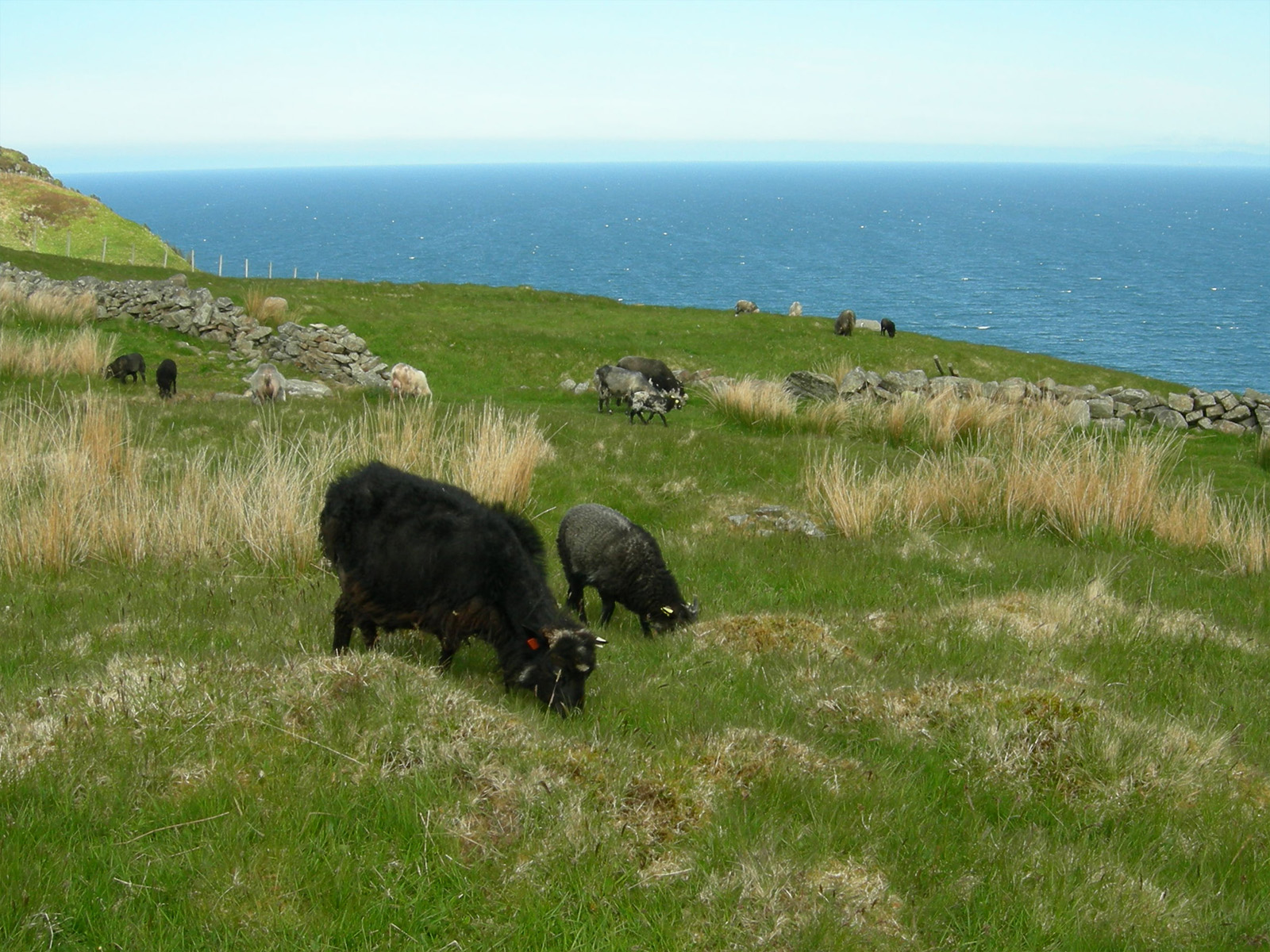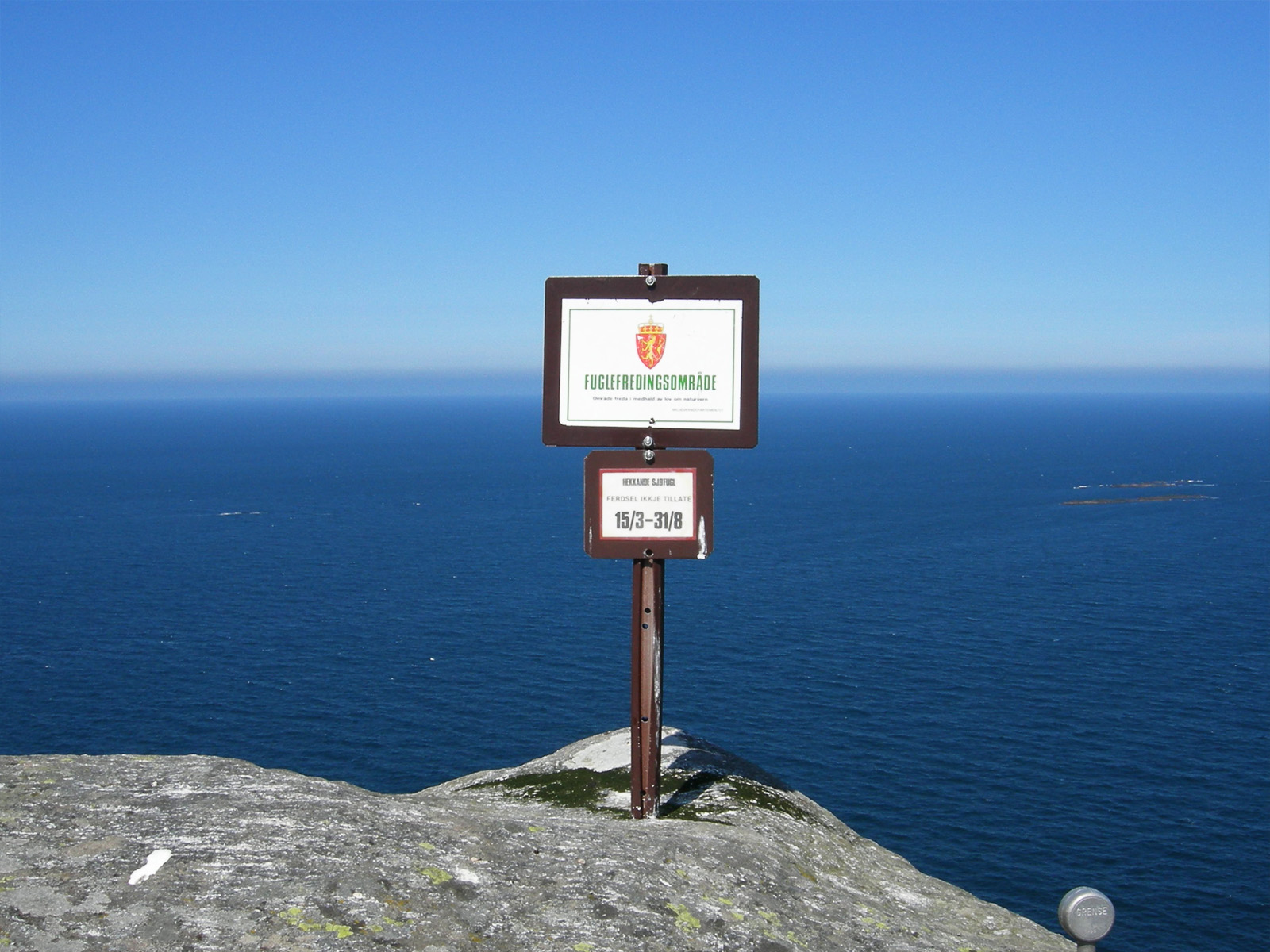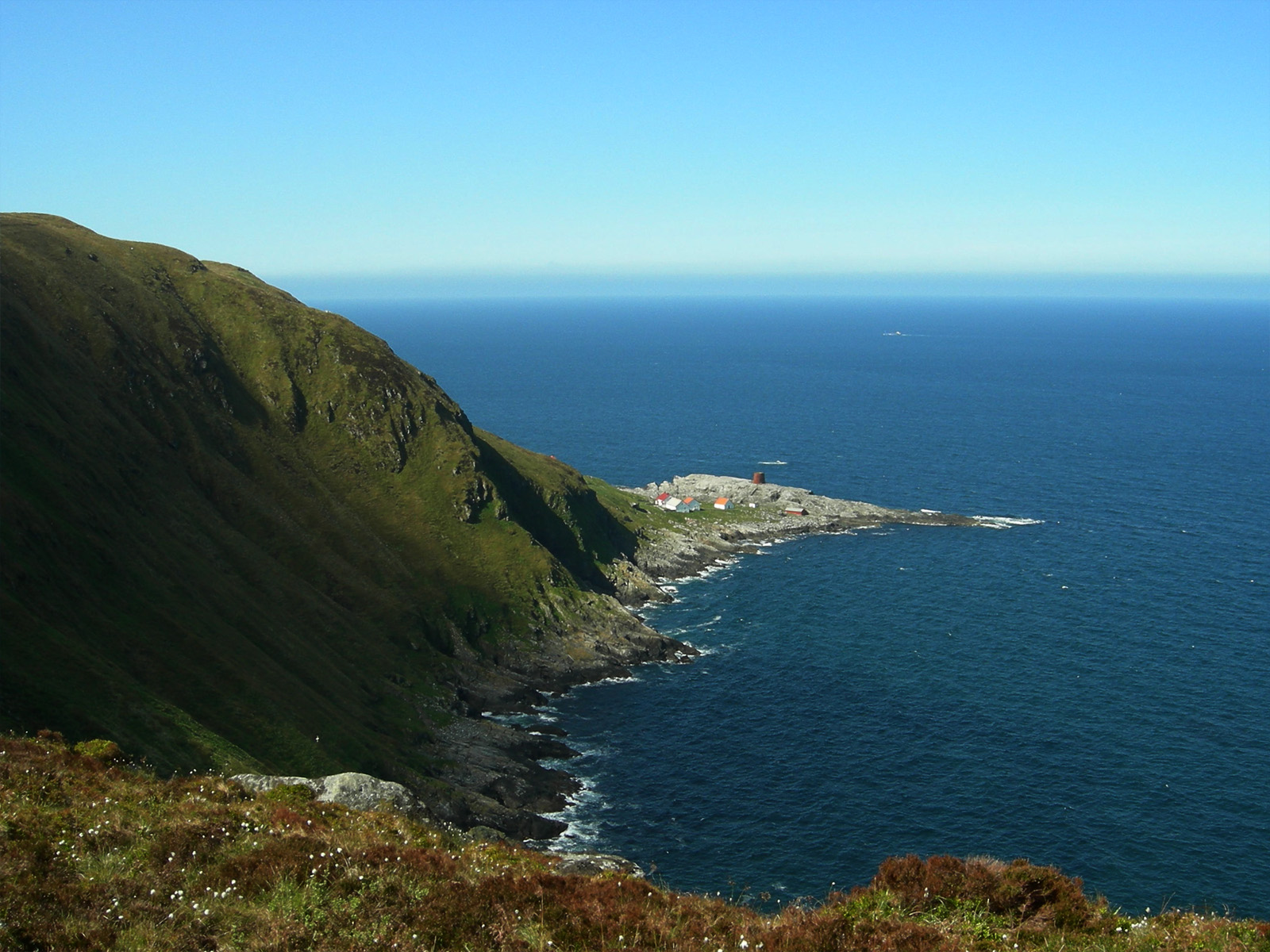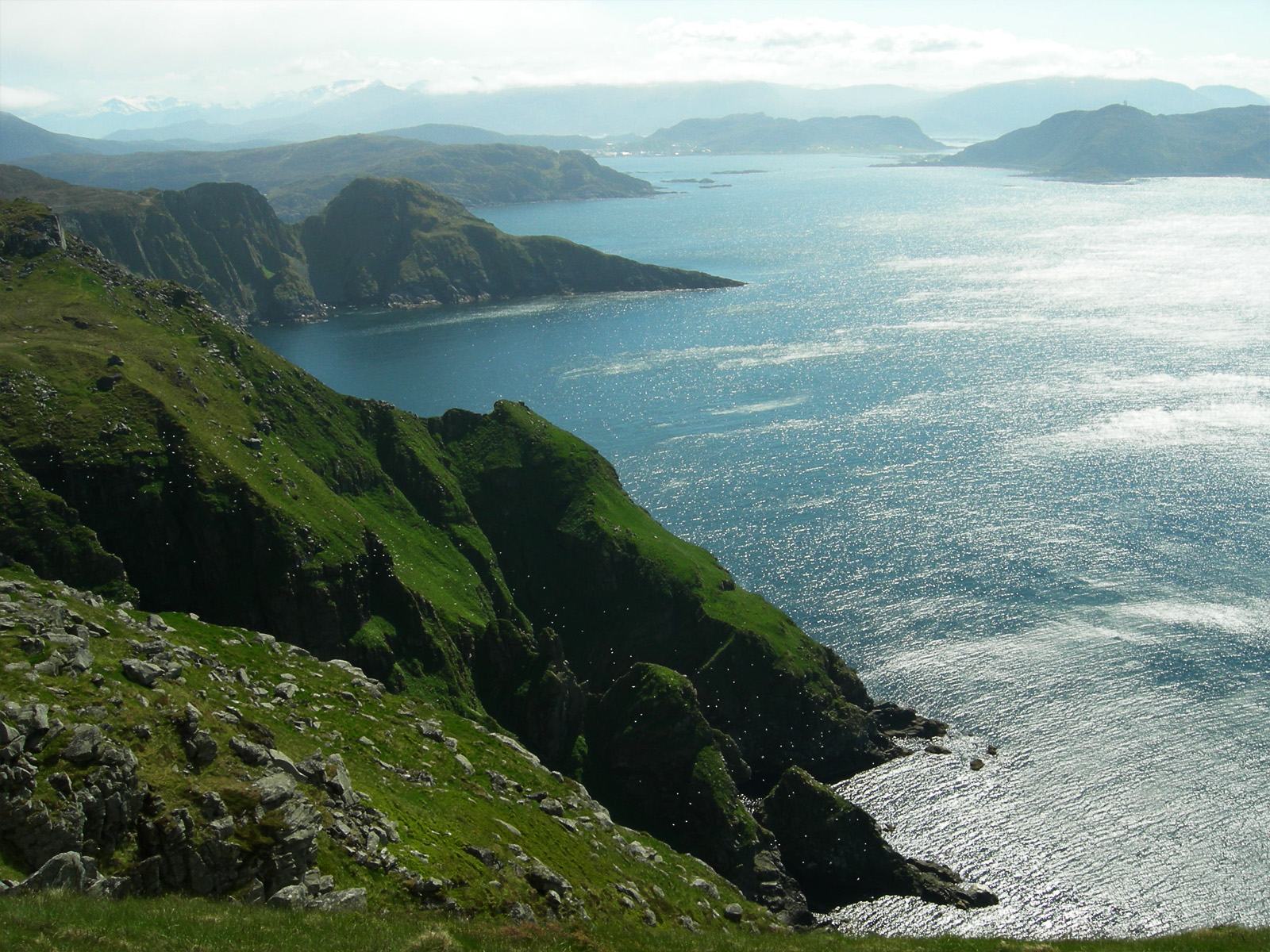Outermost in the ocean in Herøy Municipality
At the start of the Norwegian Ocean we find the island of Runde, which is known for its bustling bird life, of which the puffins are probably the most famous.
Runde is one of many islands in «Sørøyane» southwest of Ålesund. It is the southernmost bird mountain in Norway, and the largest bird island south of the Arctic Circle.
For a long time, Runde was a favorite place for ornithologists and nature photographers. The exposed location far out in the Atlantic has made Runde an ideal base for many seabirds.
Runde has Bird Safety Restrictions
All traffic (hiking) in the mountain at Runde requires caution, due to vulnerable nature and the consideration of nesting seabirds. The exact limits of The Bird Protection Areas at Runde are marked with a color point on rocks and signs standing in the terrain.
The Mainland Connection
Runde was connected to the mainland as late as 1982. Before that all transport was at sea. – Difficult, one might think. But we must not forget that for millennia the Ocean was the main transport route for the people living along the coast in Norway. Being a resident on an island in the ocean gap was in itself considered as wealth. It was on the islands along the coastal route most of the trade took place.
The life on the islands
When the autumn- and winterstorms raged along the coast, and high waves washed the shores, there were many dramatic situations for the population at Runde. The waters that encircle the island have a large number of dangerous reefs, and many ships have sunk off the coast of Runde. The most famous is «Akerendam», which wrecked by the island in the 18th century. – The entire crew of 200 died, and a lot of gold and silver coins disappeared into the bottom of the sea.
In 1972, the wreck of Akerendam was found by a group of sports divers; Bengt-Olof Gustafsson, Stefan Persson and Eystein Krohn-Dale. They found around 57,000 coins. 6,600 of them were made of gold. Some of the coins ended up at the Maritime Museum and the Coin Cabinet in Oslo, while the divers kept two-thirds of the treasure.
Are you planning a trip to Runde?
Runde is a popular island for bird watching and recreation, and tourists from all over Europe find their way there. The locals also use Runde diligently; for a quick evening stroll, or a longer day trip, where everyone has the pleasure of enjoying something of which Runde has to offer. Outermost in the ocean gap you can really fill your lungs with the wonderful and fresh sea air.
– It is a special experience to enjoy a cup of coffee on top of the Runde Mountain, while enjoying the beautiful view to the surrounding islands or the Atlantic ocean – as far as the eye can see. Many visitors prefer to be wrapped up by the delicious sea breeze down by the lighthouse on sunny summer days – it feels like balm for the soul.
Runde Lighthouse and its surroundings is a popular recreation area. Like most lighthouses, itss location can offer harsh weather, but on sunny summer days, lots of peope go there.
Runde is the largest bird island south of the Arctic Circle. The bird cliffs are located on the west side of Rundefjellet, where about 100-150.00 000 birds have their nests. The bird life at Runde is very rich, and the birds were already protected as early as 1957.
In 1981, the Conservation Area was established. The area includes four Bird protection Areas at Runde and a Bird Protection Area in the ocean surrounding the islands of Runde and Grasøyane. In 1996, the Goksøyrmyrane Nature Reserve was established.
Goksøyr Camping is the glue in the Runde community. Knut Asle Goksøyr and his wife Inguna Abuce have spent countless hours to work as facilitators for visitors to Runde.
The couple have made formidable efforts, and Goksøyr Camping helps to give the island’s visitors a positive and unforgettable experience of the trip to Runde and the municipality of Herøy. Such local enthusiasts make the experience from the island unforgettable. They make sure that tourists from all over Europe can return year after year.




















